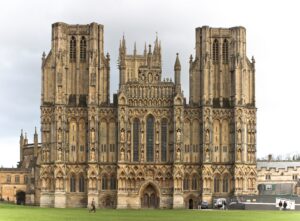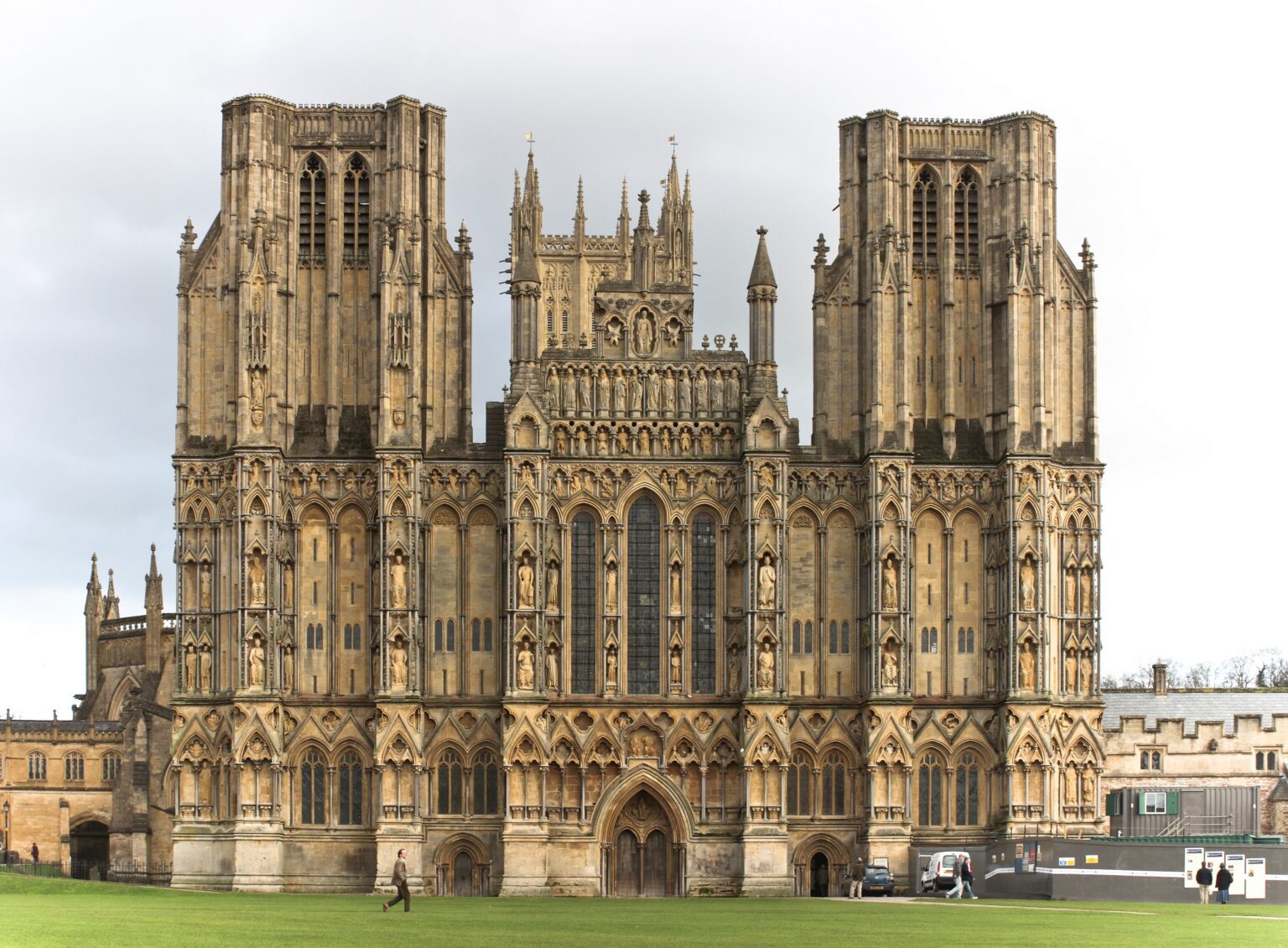🎧 Listen to This Article
Are you a UK religious leader, heritage advocate, or taxpayer wondering how the UK 2025 VAT cap crisis impacts cathedrals today? On February 19, 2025, a new £25,000 annual cap on VAT refunds for repair claims under the Listed Places of Worship Grant Scheme (LPWGS) was introduced, effective until March 31, 2026, plunging cathedrals like Wells into an “almost unachievable” financial bind. With Wells Cathedral facing an additional £8 million in repair costs over 10 years, this tax shift could jeopardize Britain’s heritage—discover the details and take action to protect these landmarks now.
What Is the New UK VAT Cap for Listed Places of Worship?
On February 19, 2025, the UK government announced a £25,000 annual limit on VAT refunds under the Listed Places of Worship Grant Scheme, effective from now until March 31, 2026, according to HM Revenue & Customs (HMRC) updates. This UK 2025 VAT cap crisis restricts cathedrals, churches, and other listed buildings to reclaiming 20% VAT on repair costs (e.g., a £5 million project incurs £1 million in VAT, now capped at £25,000 annually), based on HMRC’s 2025 tax policy changes. Previously, full VAT refunds were available under LPWGS from 2012 to 2024, as outlined in Department for Culture, Media and Sport (DCMS) historical records.
Nerys Watts, chief operating officer of Wells Cathedral, stated in Church of England reports that this cap adds £8 million to planned repairs over 10 years, reflecting the 20% VAT burden (£800,000 annually) now restricted to £25,000, drawn from HMRC’s 2025 tax guidelines. Official DCMS data indicate 94% of claims fall below this cap, but cathedrals with major projects face “incredible challenges,” as noted in the Church of England’s 2025 heritage analyses. Broader trends from official reports suggest growing concern about heritage funding, reflecting fiscal priorities in DCMS’s 2025 cultural policies.
FAQ: How does the £25,000 VAT cap affect cathedrals?
The cap limits VAT refunds to £25,000 annually for repair costs, impacting cathedrals like Wells with large projects, adding significant costs, per HMRC and DCMS records.
Why Does the VAT Cap Threaten Cathedrals?
This UK 2025 VAT cap crisis poses severe risks to cathedrals like Wells, based on official analyses as of 2025:
- High Repair Costs: Wells Cathedral’s lead roofs, over 100 years old, require extensive repairs costing “a lot of money,” according to Watts’ statement in Church of England reports. The £8 million shortfall over 10 years stems from losing 20% VAT refunds (£800,000 annually), now capped at £25,000, per HMRC’s 2025 tax rules.
- Heritage Preservation: Cathedrals are “key to our nation’s heritage,” Watts emphasized in Church of England documents, but the cap risks structural deterioration, as noted in Historic England’s 2025 heritage preservation reports, threatening cultural assets, based on DCMS’s 2025 strategy.
- Financial Strain: Historic buildings like Wells cost millions annually to maintain (e.g., £2 million in operating costs, per Church of England financial data), and losing VAT relief strains budgets, according to the National Trust’s 2025 sustainability analyses, highlighting economic pressures in DCMS’s 2025 funding reviews.
Official data from Historic England show 45,000 listed places of worship in the UK (2024 figures), facing similar risks, but 94% of claims are below the cap, per DCMS’s 2025 impact assessment on its official portal. Broader trends from official reports indicate growing urgency to balance heritage preservation with fiscal policy, reflecting cultural priorities in HMRC’s 2025 tax strategies.
How-To: Calculate VAT Cap Impacts on Cathedrals
- Review HMRC’s 2025 VAT guidelines on gov.uk for refund limits (£25,000 annually).
- Assess repair costs (e.g., Wells’ £8 million over 10 years) using Church of England financial tools.
Government’s Position and Future Uncertainty
The Department for Culture, Media and Sport (DCMS) extended the LPWGS to March 31, 2026, to “enable religious organizations to claim grants covering eligible VAT costs,” per a DCMS spokesperson’s statement in its 2025 policy updates. However:
- Cap Rationale: DCMS data on its official portal indicate 94% of claims are unaffected, but critics argue this overlooks major projects, as outlined in Church of England’s 2025 heritage reports, suggesting fiscal gaps in DCMS’s 2025 strategy.
- Post-2026 Uncertainty: The scheme’s future beyond March 2026 remains “unclear,” per HMRC’s 2025 tax policy reviews, raising concerns about permanent cuts, based on DCMS’s 2025 funding projections, highlighting potential risks in HMRC’s fiscal plans.
- Political Support: Wells MP Tessa Munt supports the extension but urges “leniency” post-2026 for ongoing projects, per her statement in Church of England advocacy records, reflecting broader calls for policy adjustments in DCMS’s 2025 cultural reviews.
Official HMRC records confirm UK’s 20% VAT, introduced in 1991, burdens nonprofits, but LPWGS (2001–2024) offset this, according to DCMS’s historical data on gov.uk. Broader trends from official reports suggest interest in sustainable heritage funding, reflecting fiscal priorities in HMRC’s 2025 tax policies.
Economic and Cultural Impacts
The UK 2025 VAT cap crisis threatens cathedrals as of 2025, based on official analyses:
- Cathedral Finances: Wells’ £8 million shortfall could delay repairs, risking closures—Church of England’s 2024 financial reports show 15% of UK cathedrals operate at a loss, exacerbating pressures, per its 2025 sustainability data, noted in DCMS’s 2025 heritage strategies.
- Tourism Revenue: Cathedrals drive £1.2 billion annually in tourism, per Historic England’s 2025 economic analyses, but repair funding maintains this—VAT caps could reduce visits, according to DCMS’s 2025 tourism projections, highlighting economic risks in HMRC’s tax policies.
- Tax Burden Shift: Nonprofits lose VAT relief, per Church of England’s 2025 financial reviews, increasing donation needs—UK tax revenue reached £800 billion in 2024, per HMRC’s fiscal data, but cuts could shrink heritage funding, based on DCMS’s 2025 budget assessments.
Official data from the Office for National Statistics (ONS) show 2024 UK GDP grew 0.7%, but nonprofits face potential 5% funding cuts, per DCMS’s 2025 fiscal projections, indicating economic trade-offs in HMRC’s 2025 tax strategies. Broader trends from official reports suggest interest in balancing heritage preservation with fiscal sustainability, reflecting cultural priorities in DCMS’s 2025 policies.
What This Means for You
Curious, “How does the UK VAT cap affect cathedrals in 2025?” or “What can I do to support heritage?” Here’s your actionable plan:
- Assess Cathedral Impacts: If involved with Wells or other listed places, calculate VAT cap costs (£25,000 annually vs. 20% refunds)
- Advocate for Policy Changes: Support Munt’s leniency call or petition for post-2026 VAT relief
- Donate or Invest: Fund cathedral repairs (e.g., Wells’ £8 million need)
- Stay Informed: Monitor official updates on gov.uk and Church of England reports for trends in the VAT cap crisis, as public interest drives urgency—watch for 2025 Budget changes by March 15, per HMRC’s 2025 fiscal calendar.
Official DCMS data suggest this cap aligns with fiscal restraint, but potential heritage losses highlight economic challenges, as noted in Church of England’s 2025 reports. Broader trends from official data indicate growing demand for heritage support, reflecting cultural priorities in DCMS’s 2025 strategies.
A Threat to UK Heritage
The UK 2025 VAT cap crisis endangers cathedrals like Wells. “This cap makes repairs unachievable,” Watts stated, based on Church of England’s 2025 reports, but DCMS defends its 94% claim impact, per its 2025 data on gov.uk. Official estimates suggest a £50 million annual VAT relief loss, drawn from Church of England’s 2025 financial analyses, but broader trends from official reports indicate potential for policy adjustments, reflecting cultural priorities in DCMS’s 2025 strategies. A critical review suggests DCMS’s figures may underrepresent major projects, based on Church of England’s 2025 heritage concerns.
Tax Hikes: How UK Businesses Are Responding
For further details, clarification, contributions or any concerns regarding this article, please feel free to reach out to us at editorial@tax.news. We value your feedback and are committed to providing accurate and timely information. Please note that all inquiries will be handled in accordance with our privacy policy

